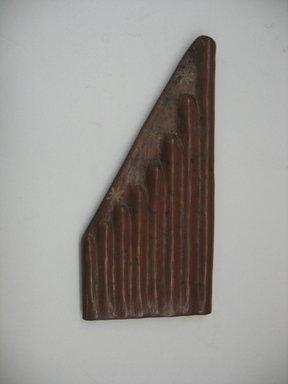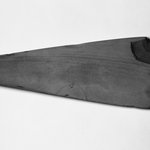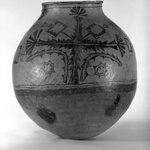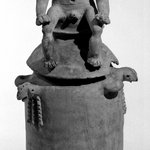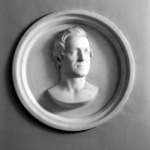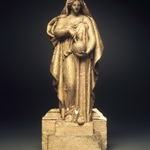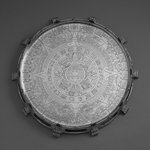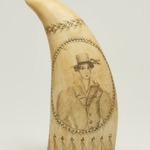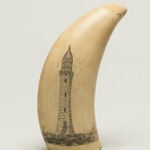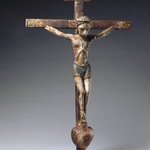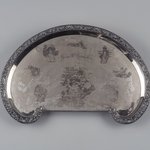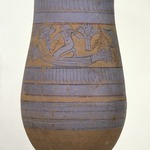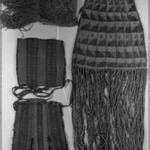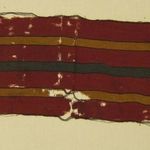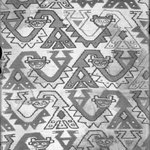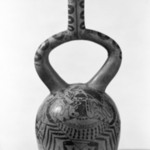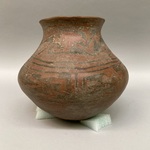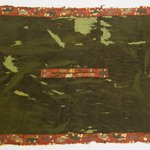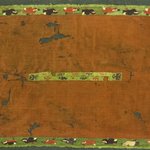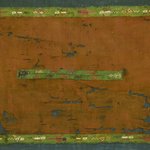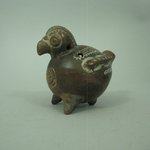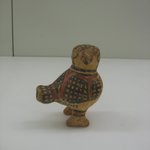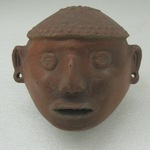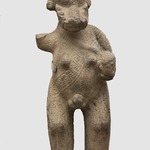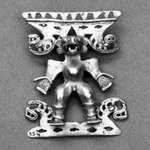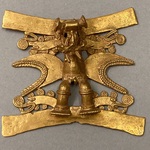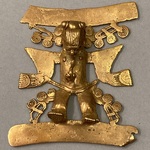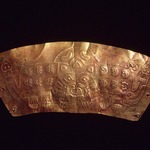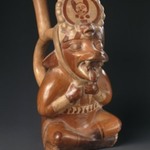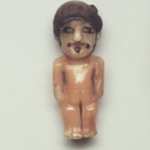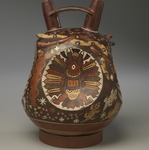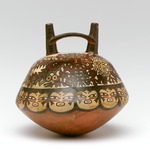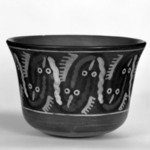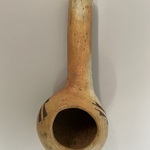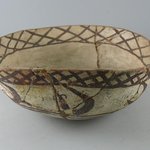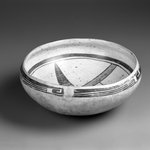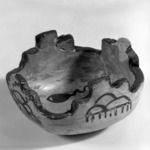
Panpipe
Arts of the Americas
Hundreds of panpipes similar to this one have been found in Nasca burial sites along pilgrimage routes, suggesting that the instruments served an important ceremonial function in ancient times. Scholars believe that panpipes were played by pilgrims during processions to the giant geoglyphs (designs scratched on the ground) in the Nasca desert and at ritual feasts that took place at the nearby site of Cahuachi. These ceremonies were held to ensure water for the agricultural season.
Cientos de zampoñas parecidas a ésta han sido encontradas en enterratorios Nasca a lo largo de rutas de peregrinaje, sugiriendo que este instrumento servía una función ceremonial importante en tiempos antiguos. Académicos creen que las zampoñas eran tocadas por peregrinos durante procesiones a los geoglifos gigantes (diseños marcados en la tierra) en el desierto de Nasca y en festines rituales que se realizaban en el sitio cercano de Cahuachi. Estas ceremonias se realizaban para asegurar el agua para la estación agrícola.
Cientos de zampoñas parecidas a ésta han sido encontradas en enterratorios Nasca a lo largo de rutas de peregrinaje, sugiriendo que este instrumento servía una función ceremonial importante en tiempos antiguos. Académicos creen que las zampoñas eran tocadas por peregrinos durante procesiones a los geoglifos gigantes (diseños marcados en la tierra) en el desierto de Nasca y en festines rituales que se realizaban en el sitio cercano de Cahuachi. Estas ceremonias se realizaban para asegurar el agua para la estación agrícola.
CULTURE
Nasca
MEDIUM
Pottery, pigment
PERIOD
Pre-Spanish
DIMENSIONS
8 1/8 x 3 3/4 x 1/2 in. (20.6 x 8.3 x 1.3 cm) (show scale)
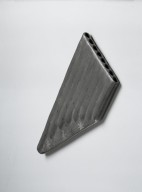


COLLECTIONS
Arts of the Americas
ACCESSION NUMBER
41.433
CREDIT LINE
Henry L. Batterman Fund
EXHIBITIONS
MUSEUM LOCATION
This item is not on view
CAPTION
Nasca. Panpipe. Pottery, pigment, 8 1/8 x 3 3/4 x 1/2 in. (20.6 x 8.3 x 1.3 cm). Brooklyn Museum, Henry L. Batterman Fund, 41.433. Creative Commons-BY (Photo: Brooklyn Museum, 41.433_bw.jpg)
IMAGE
overall, 41.433_bw.jpg. Brooklyn Museum photograph
"CUR" at the beginning of an image file name means that the image was created by a curatorial staff member. These study images may be digital point-and-shoot photographs, when we don\'t yet have high-quality studio photography, or they may be scans of older negatives, slides, or photographic prints, providing historical documentation of the object.
RIGHTS STATEMENT
Creative Commons-BY
You may download and use Brooklyn Museum images of this three-dimensional work in accordance with a Creative Commons license. Fair use, as understood under the United States Copyright Act, may also apply.
Please include caption information from this page and credit the Brooklyn Museum. If you need a high resolution file, please fill out our online application form (charges apply).
For further information about copyright, we recommend resources at the United States Library of Congress, Cornell University, Copyright and Cultural Institutions: Guidelines for U.S. Libraries, Archives, and Museums, and Copyright Watch.
For more information about the Museum's rights project, including how rights types are assigned, please see our blog posts on copyright.
If you have any information regarding this work and rights to it, please contact copyright@brooklynmuseum.org.
RECORD COMPLETENESS
Not every record you will find here is complete. More information is available for some works than for others, and some entries have been updated more recently. Records are frequently reviewed and revised, and we welcome any additional information you might have.
